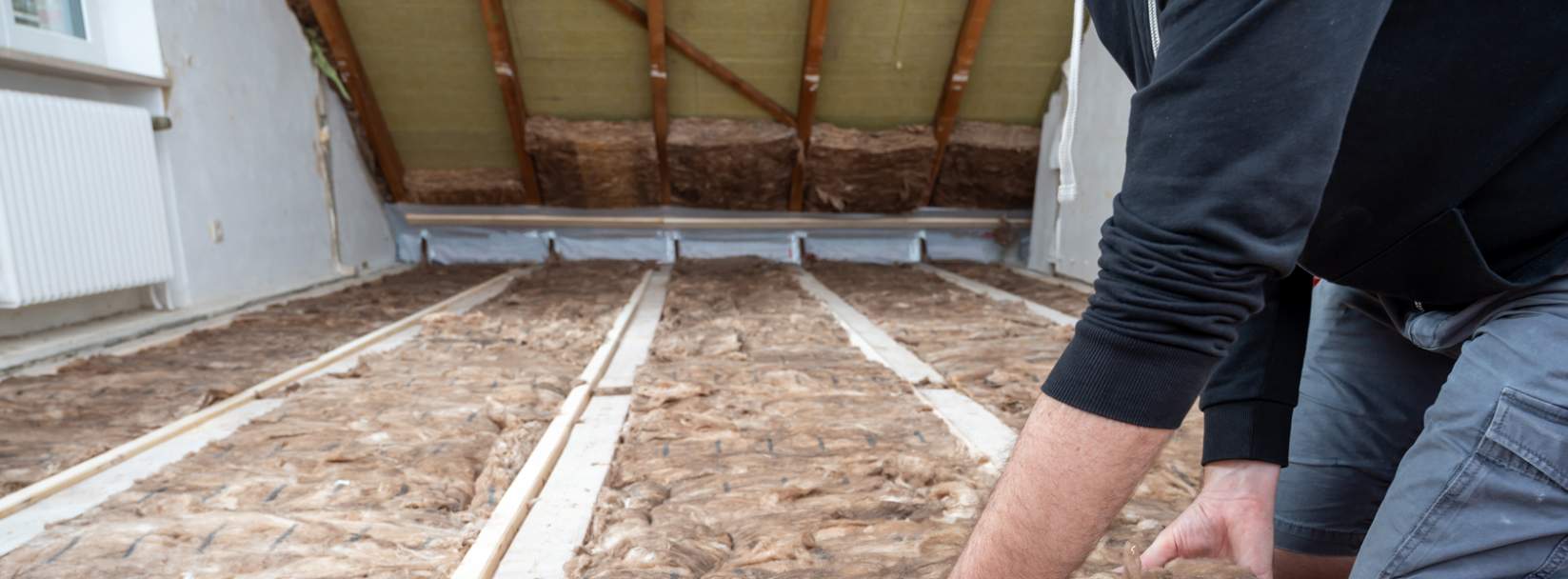It is the time of year when hesitantly we all begin to turn our heating back on. This year may see us more hesitant than usual as energy prices remain high and government support is withdrawn for all but the most vulnerable residents. With costs remaining high, the case for investing in loft insulation grows.
Loft insulation can be installed by the occupier, cutting costs further. In most cases this will be a simple job without repercussions. Even in an apartment complex, additional loft insulation can benefit the whole building. While those on the top floors will benefit the most, there will still be a benefit for the properties below as the rate of transfer of heat between floors is also slowed.
Irrespective of the type of property, residents should monitor their loft space after making these changes to ensure there are no unintended outcomes which can sometimes emerge from improving the energy efficiency of your home.
Unintended consequences
If you go into your loft and see water lying on top of the insulation, droplets on the underside of the roofing felt or damp patches, you could have a problem with ventilation. Condensation is caused by warm, moist air entering a void from below and hitting the cold underside of the roofing felt. This warm moist air can originate from internal gaps in the building’s structure or in some cases be drawn into the roof void from external sources such as bathroom fans and boiler flues. This can then drip down onto the top of the insulation and eventually cause further issues if not addressed.
Excessive and prolonged exposure to condensation could lead to problems in a loft such as rot and mould, resulting in expensive repair bills or health problems. The same is true of excessive moisture elsewhere in the home where colder walls and windows may lead to condensation in living spaces, followed by mould and structural defects.
Government and other bodies talk frequently about increasing insulation levels in residential properties but that must go hand-in-hand with improving controlled ventilation. The harm caused by excessive moisture and serious mould growth has been tragically proven many times. Most recently Awaab’s Law will set deadlines for landlords in England and Wales to tackle reported hazards, including mould and damp.
Holistic home enhancements
Occupiers should not let the prospect of condensation, damp and mould discourage them from improving their energy efficiency; the benefits to personal finances, health, and the environment can be substantial. Before installing improvements, consider the property in its entirety. An initial energy survey is a good place to start and will help in targeting finances as to where the best benefits form improvements can be found.
If installing loft insulation yourself, become familiar with the space first. For example, any ventilation gaps at the eaves needs to be retained to preserve the existing ventilation system in the loft. Consider complementary upgrades, such as draft proofing. This is a relatively cheap and easy upgrade for homeowners to fit themselves but one that could still save up to £60 per year according to the Energy Saving Trust. Often forgotten are loft hatches. By fitting draught stripping to loft hatches, occupants can prevent moist air entering the loft space and save money.
Monitoring improvements
After any upgrades are fitted, monitor affected spaces, particularly those infrequently used. If condensation emerges as a problem, analysis of why the condensation has occurred is essential. It could be of a result of changing the fabric insulation in the property or perhaps the occupants’ use of the property has changed and raised the humidity levels.
There are solutions to most problems, the difficult part is making sure the right approach is chosen. Maybe structural repairs are needed or it could be as simple as small changes in how the property is used. Filling the bath with cold water first before adding the hot can reduce the amount of condensation by up to 90 per cent.
Use of technology can help too. A smart meter will not directly improve energy efficiency, but it enables households to interrogate energy usage and use these records to compare consumption before and after upgrades. This will provide evidence of the effects of any improvement in the property’s energy efficiency and carbon footprint.
Further information
Contact Charles Thompson or Andrew McRoyall

(2).jpg)
.jpg)
.jpg)




.jpg)
.jpg)
.jpg)